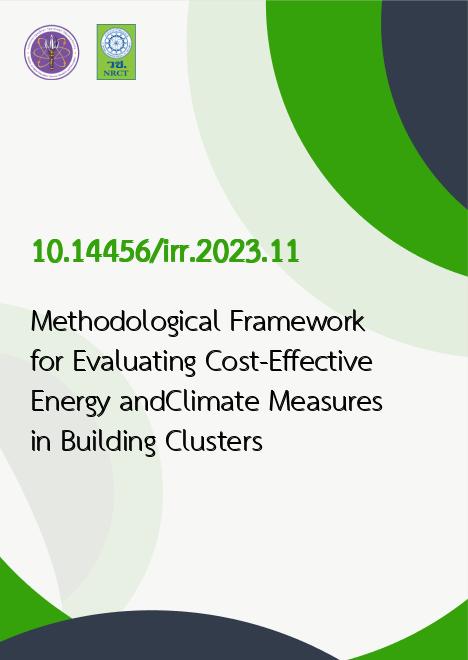
|
Methodological Framework for Evaluating Cost-Effective Energy andClimate Measures in Building Clusters |
|---|---|
| รหัสดีโอไอ | |
| Creator | Suparatchai Vorarat |
| Title | Methodological Framework for Evaluating Cost-Effective Energy andClimate Measures in Building Clusters |
| Contributor | Watcharapong Tantawat, Prayuth Rittidatch, Aumnad Phdungsilp |
| Publisher | Phetchaburi Rajabhat University |
| Publication Year | 2566 |
| Journal Title | Interdisciplinary Research Review (IRR) |
| Journal Vol. | 18 |
| Journal No. | 5 |
| Page no. | 29-36 |
| Keyword | Building energy performance, Energy modeling, Energy planning, Marginal abatement cost curve |
| URL Website | https://ph02.tci-thaijo.org/index.php/jtir |
| Website title | Interdisciplinary Research Review (IRR) |
| ISSN | 2697-536X |
| Abstract | Building renovation and energy-efficient retrofitting is a growing concern in many building stocks to improvethe energy performance and energy-related greenhouse gas (GHG) emission reductions. This paper aims to presentthe methodological framework for energy and climate change mitigation planning in building clusters. Theproposed methodology includes building energy modeling and marginal abatement cost (MAC) curve. It enablesto simulate building energy use and GHG emissions associated with energy retrofit measures (ERMs) and toevaluate the cost-effectiveness. The relationship between the cost and emission reduction potentials is presentedin terms of a MAC curve. Using a case study of an educational building in Bangkok, Thailand, the energyperformance of four ERMs was simulated and a MAC curve was constructed. Findings showed that the baselineemissions are 310 tCO2e and total emissions from implementing four ERMs are 250.64 tCO2e. The improvementof air-conditioning systems contributed the largest share of mitigation potential and was followed by measuresrelating to building envelopes, building energy management systems, and lighting. On the cost-effectiveness,switching to efficient lighting showed the highest cost-savings of 84.59 US$ per tCO2e. Other ERMs deliveredthe cost-savings from 50 to 63 US$ per tCO2e. The proposed methodological framework would support thedecision-making for the implementation of energy and climate planning at various scales from an individualbuilding to an urban area. |